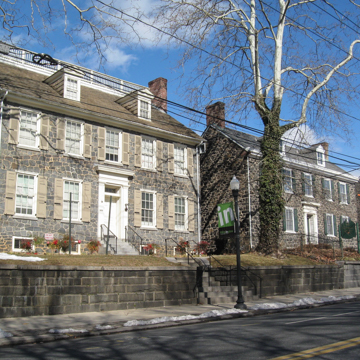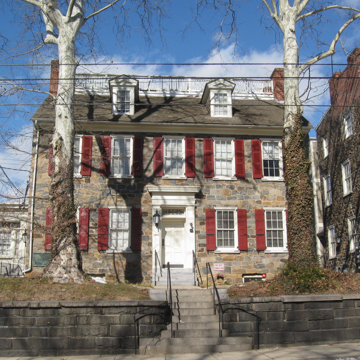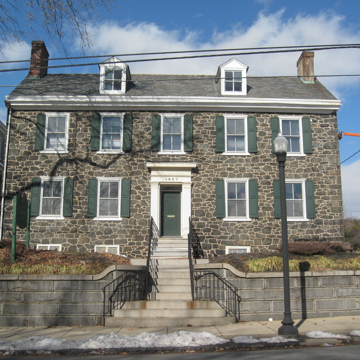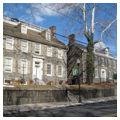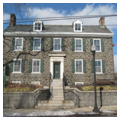This handsome row of early stone houses extends up the street from the Lea House (WL52) and, like it, was saved by Old Brandywine Village, Inc. The Tatnall Houses, at 1803 (c. 1770 with alterations of the 1840s) and 1805 (c. 1850) Market Street, were rescued from being demolished for a high-rise apartment building. The former was famed as Revolutionary War general Anthony Wayne's headquarters, where Washington held council. Restoration in the 1970s removed nineteenth-century porches and mansard roofs. Edward Tatnall, nineteenth-century botanist and owner of Wawaset Nursery, kept a telescope on the balustraded rooftop of his house at 1805 Market. The titanic explosion of some DuPont powder wagons on 14th Street in May 1854 smashed windows here. The Tatnall-Febiger House is at 1807 (1735 rear section; c. 1807 front); the William Lea House at 1901 (c. 1800, restored 1963–1966). Old Brandywine Village razed an incompatible nineteenth-century town house at 1903 and restored the houses at 1905 (c. 1805) and 1907 (c. 1785) in the 1970s, removing a commercial storefront from the latter.
You are here
Market Street Houses
If SAH Archipedia has been useful to you, please consider supporting it.
SAH Archipedia tells the story of the United States through its buildings, landscapes, and cities. This freely available resource empowers the public with authoritative knowledge that deepens their understanding and appreciation of the built environment. But the Society of Architectural Historians, which created SAH Archipedia with University of Virginia Press, needs your support to maintain the high-caliber research, writing, photography, cartography, editing, design, and programming that make SAH Archipedia a trusted online resource available to all who value the history of place, heritage tourism, and learning.









